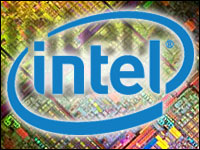
Consolidation is a common theme in the IT sector, with IBM’s purchase of Unica, Dell and HP’s pursuit of 3PAR, and Intel’s planned acquisition of security specialist McAfee standing as the most recent moves. Do such deals have anything in common? Sometimes.
Large IT vendors tend to grow in two ways; by developing new products and technologies themselves or by acquiring firms with innovative products or technologies. This is no either/or proposition — the best vendors pursue both approaches, and corporate acquisitions are anything but one-size-fits-all propositions.
That said, most deals are complementary in some way to the acquiring firm. Like people, businesses do best what they already understand. As a result, the vast majority of high-tech acquisitions are accretive, with vendors pursuing companies whose assets can easily broaden existing solution sets and appeal to already-satisfied customers.
Every once and a while, though, someone comes up with a deal that contradicts conventional wisdom in ways that shock supporters and critics alike. While such acquisitions are risky, they also carry the greatest potential for gainful synergies that can transform companies for the better and even alter industry-wide balances of power.
Intel’s announcement of its plans to acquire security specialist McAfee appears to be just such a deal, drawing a host of confounded responses across the analyst community and blogosphere and a multitude of “WTF” tweets in its wake. Most criticisms of Intel followed a common theme; why would the world’s preeminent microprocessor vendor pay US$7.68 billion (a 60 percent premium) for what many consider a second-rank (after Symantec) consumer security specialist? Let’s try to sort out an answer.
What Is McAfee?
Many folks judge McAfee from its most obvious assets — the preview antivirus company software that comes pre-loaded on Acer, Dell, Sony and Toshiba PCs. But do those products represent McAfee’s core strategic strengths? Not particularly. Though the company’s consumer business is significant, it accounts for just 39 percent of net revenue. The lion’s share of net revenue (about 61 percent) is driven by McAfee products designed for corporate and government customers, along with services such as those for monitoring and preventing network intrusions.
The McAfee Global Threat Intelligence (GTI) network, which is designed to track evolving Internet-based malware, exploits and malicious code in real-time, plays a particularly interesting role in these offerings. The GTI network has been instrumental in helping to protect against threats such as the recent USB worm, and it has also provided valuable insights into broader issues, including linking the sophisticated “Operation Aurora” cyberattack targeting source code owned by Google and 30-plus companies in Silicon Valley to hackers in China. Bottom line: McAfee is far more than the No. 2 antivirus player Intel’s critics claim, with a host of assets that could be instrumental in developing future corporate and consumer solutions and services.
Why Does Intel Want McAfee?
Intel sums up McAfee’s value proposition in the second paragraph of its press release, saying that while security is a fundamental component of online computing, current solutions do not “fully address billions of new Internet-ready devices, including mobile and wireless devices, TVs, cars, medical devices and ATM machines, as well as the accompanying surge in cyberthreats.” Translation: Traditional user- and organization-oriented security solutions are neither supple nor robust enough to meet the needs of increasingly embedded and globally dispersed digital intelligence.
Some call this trend the “Internet of things,” in which billions or trillions of wired and wirelessly interconnected devices and sensors, including embedded chips and RFID tags, provide invaluable information and insights to consumers and businesses.
However, the effort to achieve this digitally Utopian vision is fraught with numerous problems, particularly those related to management and security. IT vendors have been eloquent regarding their cloud computing strategies and solutions, but few have addressed how to effectively secure the end points inhabiting the amorphous outer reaches of cloud networks.
Why so? Likely because of the technical limitations of embedded chips and the microprocessors typically used in these devices. In a quest to maximize application performance and battery life, most of these products don’t have the headroom to support traditional security software.
An alternative — building “hardware-enhanced” security features and solutions directly into firmware, chips and chipsets — is at the heart of the McAfee deal. How serious is Intel about this? Very — enough that it has elevated security to be on par with critical research and development efforts in energy-efficient performance and connectivity.
Making Practical/Strategic Sense
Just how important and real is the McAfee plan to Intel? From a practical standpoint, the company is purchasing a profitable (with 80 percent margins) organization with excellent management, established commercial products, considerable IP assets, a healthy mix of business/consumer clients, and room to grow — hence, Intel’s decision to operate McAfee as a wholly owned subsidiary reporting into its software and services organization.
Bottom line: While Intel is paying a premium for McAfee (at least in part, we expect, due to other potential suitors) and will need to make additional research investments, the burden is anything but onerous when measured against the deal’s potential benefits.
Strategically, the McAfee acquisition appears especially sound if various visionary notions of cloud computing come to fruition. Intel has numerous products that should benefit from hardware-enhanced security features — most obviously its Atom processors and Wind River technologies — but its continuing energy-efficiency and connectivity efforts should be important to helping to differentiate and develop these solutions, as well.
That said, the company should have been clearer about how the McAfee deal could enhance its datacenter solutions. Securing billions of globally distributed end points is one thing, but effectively managing the “Internet of things” should provide Intel’s system vendor customers huge market opportunities.
At the end of the day, the value of McAfee to Intel’s OEM and other clients is the point on which the deal’s success will finally hinge. While it has been — and remains — one of the IT industry’s most innovative vendors, Intel should be considered through the lens of how its efforts enable its customers to develop equally innovative solutions and services. Overall, the McAfee acquisition should eventually and essentially transform Intel. Properly executed, that transformation could well extend across the entire IT industry.
E-Commerce Times columnist Charles King is principal analyst for Pund-IT, an IT industry consultancy that emphasizes understanding technology and product evolution, and interpreting the effects these changes will have on business customers and the greater IT marketplace.























































The problem with a hardware based chip for security is once its cracked your done. Software based can change with ease and that is why this Intel McAfee thing will never work correctly. It also ties you to one security option which I think could be a cause for other Security makers to file a complaint. What would be nice is to have hardware set aside with dedicated CPU and memory for security on a computer. That way resources would not be tied up. This could be a good thing between Intel and McAfee but I have my doubts.